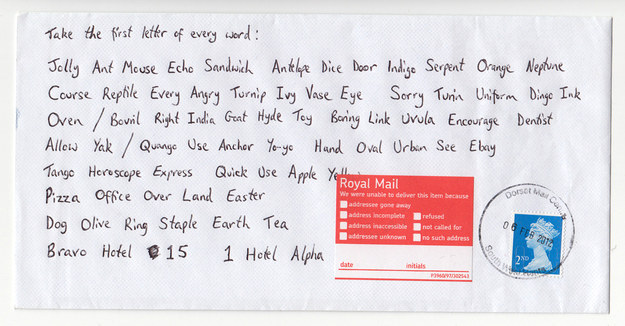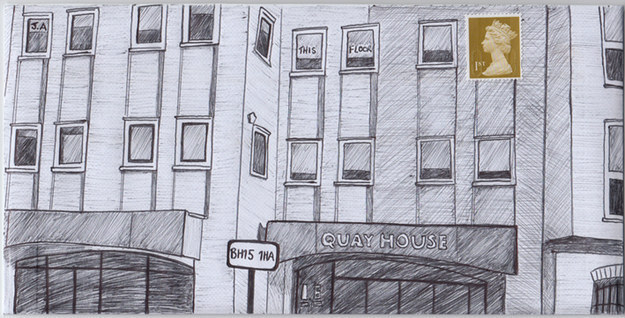Postal Puzzles
In the English county of Buckinghamshire lives a graphic designer named James Addison. In 2009, Addison noticed (per a video he put together) that his postal worker, Frank, was surprisingly efficient — Frank could deliver mail to ten different addresses in about two minutes. For James, this created challenge: could he use his design skills to stump his postman?
It’s questionable whether Frank or James was more impressive.
James decided to mail letters to himself to see if Frank and other members of the Royal Mail Postal Service could figure out how to get the letters back to James. But James didn’t make it easy. Instead, he found interesting ways to write his address. Some, like the one below (via Buzzfeed, larger version here) are pretty simple — the instructions are included on the envelope — but even so, it’s bit more complicated than a typical name/street/etc. version of an envelope.

But he’s gotten much more creative than that — and made it much more difficult for the postal workers. For example, one time he wrote the entire address as a pictogram (larger version here):

And another was simply a picture of the building to which the letter was to be delivered (larger here):

In other contexts, this harmless prank would meet the bottom of the trash can. But the Royal Mail Postal Service was up to the challenge. Despite James’ non-traditional way of addressing the envelopes, the Postal Service never failed to deliver the mail. Further, they probably appreciated the challenge; as seen here, when Addison sent them an envelope addressed in Morse code, the Postal Service not only cracked the code, but added a smiley face. (Despite the creativity, the Postal Service told the Telegraph that they’d rather not have any copycats — “We would of course encourage our customers to always use a full address and postcode when addressing their mail to ensure it arrives at its intended destination.”)
Addison, however, has given up on the hobby. In 2014, per the Buzzfeed article linked-to above, Addison figured that by that point, the Postal Service knew where the weird envelopes were going to — with no need to decipher his addresses.
Bonus Fact: In 1970, the U.S. Postal Service went on strike. There were lots of underlying reasons, of course, but according to the Postal Museum’s website, a pay disparity was the major driver. Postal workers had complained about low wages, with many eligible for welfare. The wages of postal workers were set by Congress, at the time, and in response to the complaint Congress voted the postal workers a 4% raise — and a 41% raise for the members of Congress themselves.
From the Archives: The Decipherers: How the U.S. Postal Service figures out where the incredibly-sloppily addressed envelopes are supposed to go.
Take the Quiz: Name the state capital by zip code.
Related: “The Post Office Book: Mail and How it Moves” by Gail Gibbons. It’s a kid’s book, but it could prevent future letters from being addressed to only “Grandma” and suffering a sad, unintended fate.
